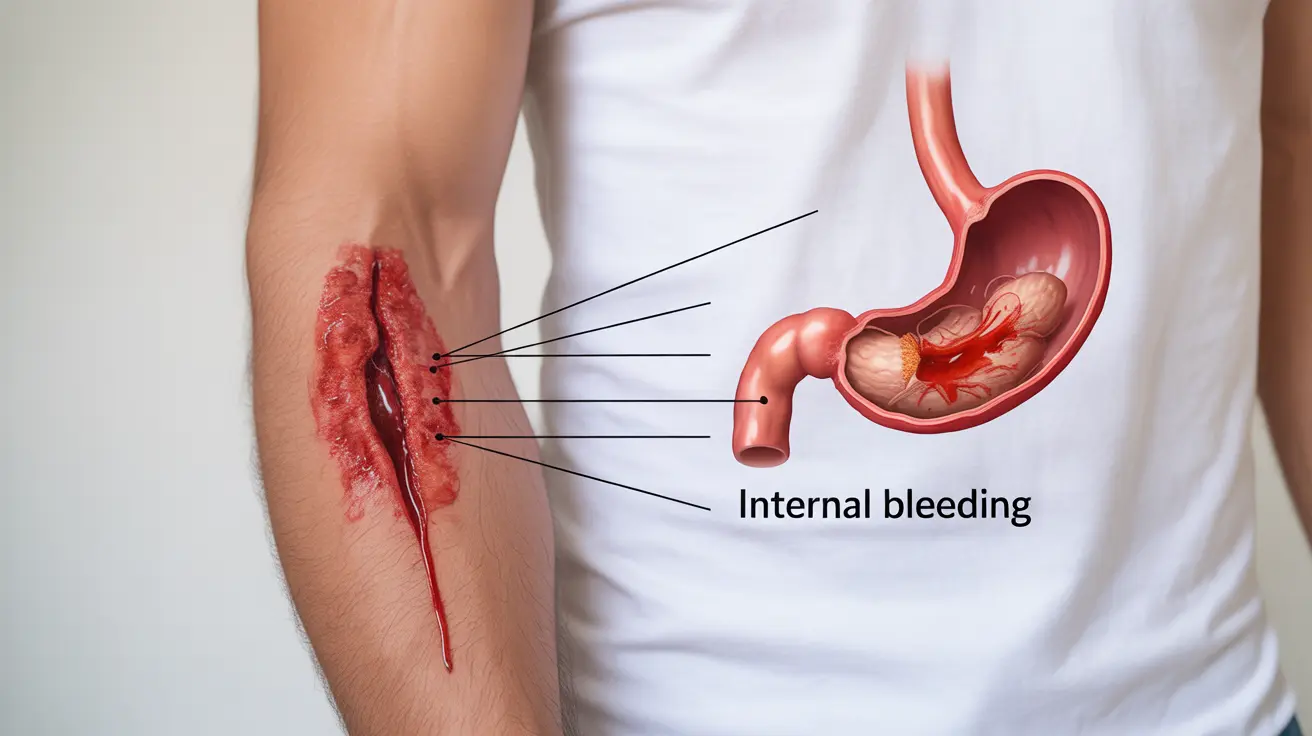Blood loss, whether internal or external, can be a serious medical concern that requires prompt recognition and appropriate intervention. Understanding the different types of blood loss, their causes, and warning signs is crucial for everyone, as this knowledge can potentially save lives in emergency situations.
This comprehensive guide will explore the essential aspects of blood loss, including its various causes, symptoms to watch for, proper first aid techniques, and when to seek immediate medical attention.
Types and Common Causes of Blood Loss
Blood loss can occur in two main forms: external and internal bleeding. External bleeding is visible and typically results from injuries or wounds, while internal bleeding happens inside the body and may not be immediately apparent.
External Blood Loss
Common causes of external blood loss include:
- Cuts and lacerations
- Puncture wounds
- Surgical incisions
- Trauma injuries
- Nosebleeds
- Heavy menstrual bleeding
Internal Blood Loss
Internal bleeding can result from various conditions:
- Trauma from accidents or injuries
- Ruptured blood vessels or aneurysms
- Gastrointestinal bleeding
- Bleeding disorders
- Complications from certain medications
- Internal organ damage
Warning Signs and Symptoms
Recognizing the signs of significant blood loss is crucial for prompt intervention. The severity of symptoms often correlates with the amount of blood lost.
Early Signs
- Weakness or fatigue
- Pale skin
- Rapid breathing
- Anxiety or restlessness
- Cool, clammy skin
Severe Symptoms
- Confusion or disorientation
- Rapid, weak pulse
- Very low blood pressure
- Loss of consciousness
- Extreme thirst
First Aid for Blood Loss
Proper first aid can be life-saving in cases of external bleeding. Follow these essential steps:
Immediate Actions
- Apply direct pressure to the wound
- Use clean cloth or sterile gauze
- Maintain pressure for at least 15 minutes
- Elevate the injured area if possible
- Keep the person warm and calm
When to Seek Emergency Care
Call emergency services immediately if:
- Bleeding cannot be controlled
- The person shows signs of shock
- There's suspected internal bleeding
- The wound is large or deep
- There's bleeding from a head injury
Complications and Treatment
Severe blood loss can lead to serious complications that require immediate medical intervention. Healthcare providers will focus on:
- Stopping the source of bleeding
- Replacing lost blood volume
- Treating underlying causes
- Preventing shock
- Managing potential organ damage
Prevention and Management
For individuals at higher risk of blood loss, preventive measures are essential:
For Those on Blood Thinners
- Regular medical monitoring
- Careful medication management
- Avoiding activities with high injury risk
- Wearing medical alert jewelry
- Having an emergency plan
For Bleeding Disorders
- Working closely with healthcare providers
- Following prescribed treatment plans
- Taking recommended precautions
- Regular medical check-ups
- Having emergency supplies ready
Frequently Asked Questions
What are the common causes and types of blood loss, including internal and external bleeding?
Blood loss can occur externally through wounds, cuts, or trauma, or internally due to organ damage, medical conditions, or complications. External bleeding is visible on the skin surface, while internal bleeding occurs within the body and may require medical imaging to detect.What are the warning signs and symptoms that indicate serious or life-threatening blood loss?
Serious blood loss is indicated by pale skin, rapid breathing, weakness, confusion, low blood pressure, rapid weak pulse, and eventually loss of consciousness. These symptoms require immediate medical attention.How should I provide first aid for external bleeding, and when is emergency medical help needed?
Apply direct pressure to the wound using clean materials, elevate the injured area if possible, and maintain pressure for at least 15 minutes. Seek emergency help if bleeding can't be controlled, the wound is large or deep, or the person shows signs of shock.What complications can result from untreated or severe blood loss, and how are they treated?
Severe blood loss can lead to shock, organ damage, and death if untreated. Treatment involves stopping the bleeding, replacing blood volume through transfusions or fluids, and addressing the underlying cause.How can blood loss be prevented or managed in people taking blood thinners or with bleeding disorders?
Prevention involves regular medical monitoring, careful medication management, avoiding high-risk activities, and having an emergency plan. People with bleeding disorders should work closely with their healthcare team and follow prescribed treatment plans.




